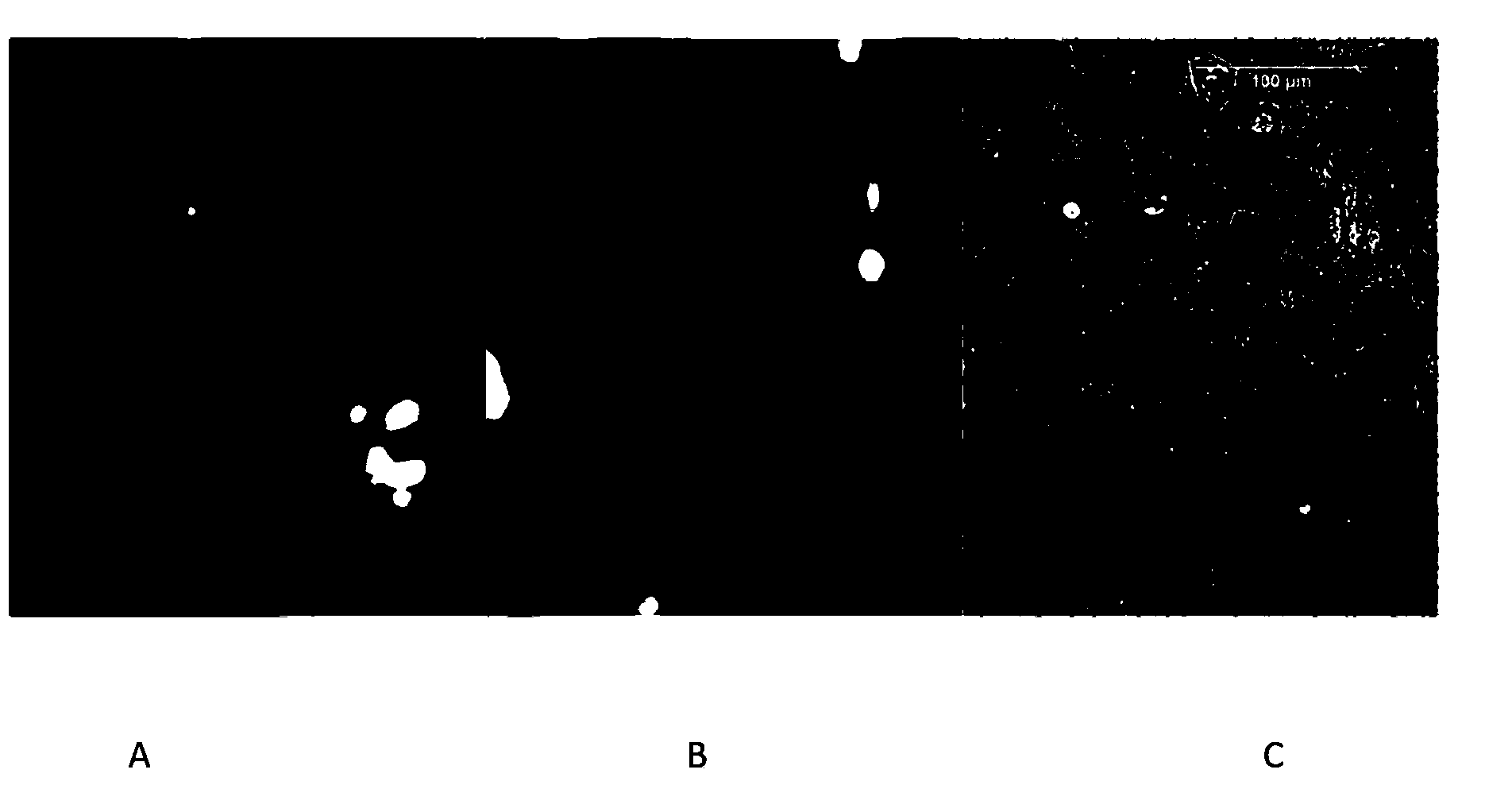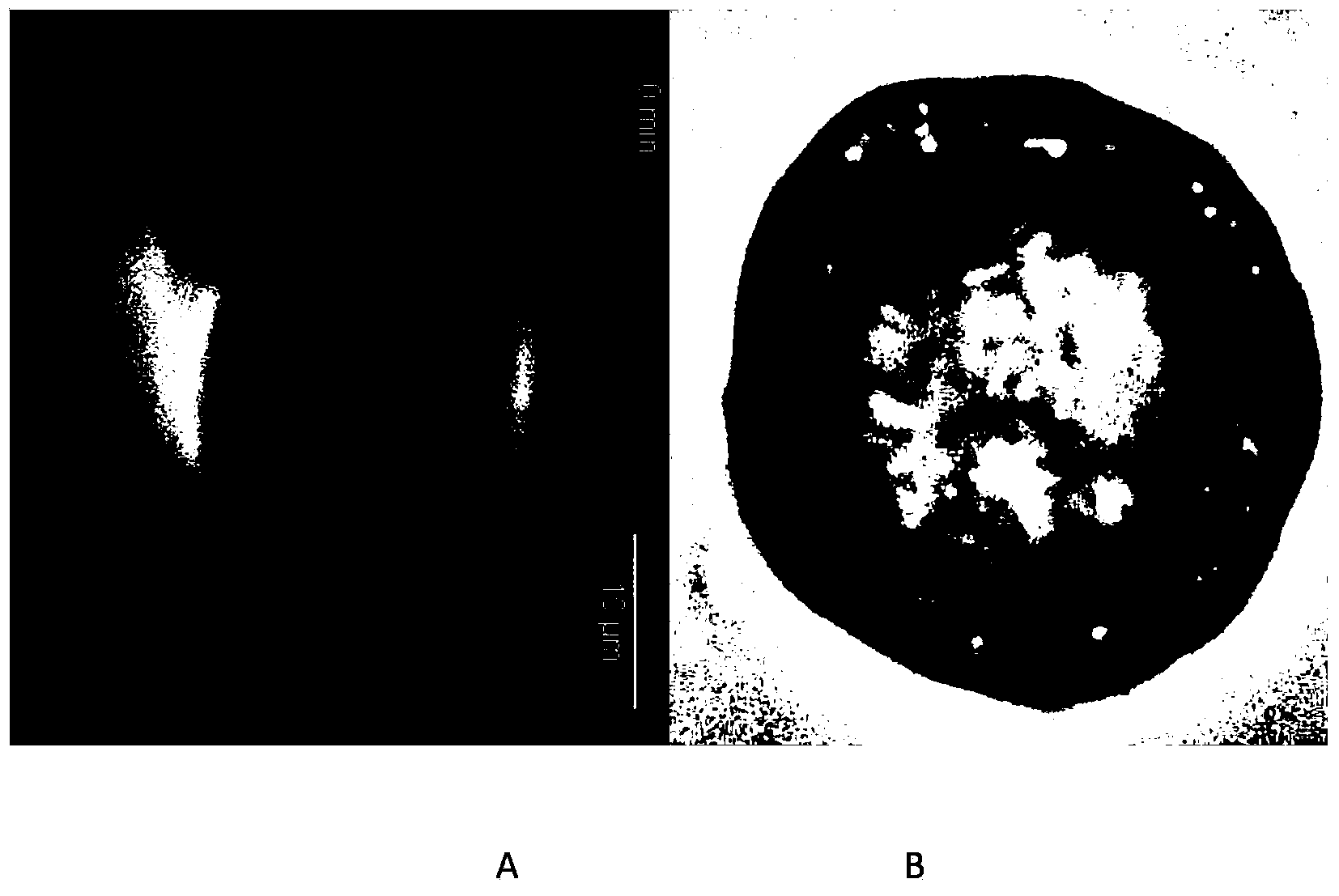Method for constructing genetic character chimeric multi-cellar structure
A structural method and a technology for genetic traits, which are applied in the field of constructing multicellular structures chimeric with different genetic traits, can solve the problems of long time and low efficiency, and achieve the effects of simple method, shortened operation time and improved efficiency.
- Summary
- Abstract
- Description
- Claims
- Application Information
AI Technical Summary
Problems solved by technology
Method used
Image
Examples
Embodiment 1
[0028] The MDCK cell line is used as the basic cell, and green fluorescent protein and red fluorescent protein are respectively expressed in two different cells.
[0029] Simply mix the above two kinds of cells expressing green and red fluorescent proteins at a ratio of 10:1, and the results after culturing for 96 hours are as follows: figure 1 As shown, panel A is a photo of detecting green fluorescent protein, panel B is a photo of detecting red fluorescent protein, and panel C shows the state of all cells growing in a two-dimensional plane. Simple mixing of the two types of cells did not produce a three-dimensional multicellular structure. This embodiment is a comparative example.
Embodiment 2
[0031] The MDCK cell line was used as the basic cell, and the green fluorescent protein was expressed in the MDCK cells, and the expression positions of the green fluorescent protein were located in microfilaments and nuclei, respectively. In the preliminary experiment, immunofluorescence was performed on ordinary MDCK cell lines grown in two-dimensional planes fixed with paraformaldehyde and MDCK cell colonies expressing green fluorescent protein (cells cultured separately in two-dimensional dispersion and cells in dense culture in two dimensions) Staining and detection of E-Cadherin protein, it can be observed that there is an obvious enrichment of fluorescent signals between densely cultured cells, and it can be confirmed that there is a difference between the above-mentioned common MDCK cells and MDCK cells expressing green fluorescent protein. Obvious adhesive junctions.
[0032] Suspend the MDCK cells expressing green fluorescent protein and ordinary MDCK cells respectiv...
Embodiment 3
[0039] The MDCK cell line is used as the basic cell, and green fluorescent protein and red fluorescent protein are respectively expressed in two different cells.
[0040] Immunofluorescence staining was performed on the above-mentioned cell population and common MDCK cell lines to detect E-Cadherin protein. For MDCK cells with obvious intercellular junctions, the method in Example 2 can be used to promote cell junctions, or the following nucleic acid can be used to label cells Methods.
[0041] If E-Cadherin protein is not detected, there is no obvious intercellular connection between these MDCK cells, and the following nucleic acid labeling methods are used to promote cell connection:
[0042] (1) Prepare nucleic acid single strands complementary to the sequence that can label cells, and prepare complementary sense strands and antisense strands respectively, the length of which is 20 to 30 bases, the single strand has no secondary structure, and the GC content is 50%. Single...
PUM
 Login to View More
Login to View More Abstract
Description
Claims
Application Information
 Login to View More
Login to View More - R&D
- Intellectual Property
- Life Sciences
- Materials
- Tech Scout
- Unparalleled Data Quality
- Higher Quality Content
- 60% Fewer Hallucinations
Browse by: Latest US Patents, China's latest patents, Technical Efficacy Thesaurus, Application Domain, Technology Topic, Popular Technical Reports.
© 2025 PatSnap. All rights reserved.Legal|Privacy policy|Modern Slavery Act Transparency Statement|Sitemap|About US| Contact US: help@patsnap.com



